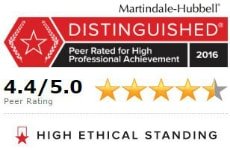A couple of years ago, the State of Maine renewed its relationship with CMI, the manufacturer of Intoxilyzers (Maine started with the CMI Intoxilyzer 4011 in the 1970’s, then the Intoxilyzer 5000 about 12 years later, next came the Intoxilyzer 5000EN, which lasted another twelve years) by purchasing the Intoxilyzer 8000 en masse. Each breath testing instrument was flawed in several major ways. The implementation of each new model represented an acknowledgement of the flaws with its predecessor, although neither CMI or the State of Maine would ever acknowledge any flaws with the current version.
The Intoxilyzer 8000: newest version of a flawed product, same false claims of perfection, same lie. If they were marketing peanut butter claiming their’s taste best, that would be “puffing”. But, CMI and our government are using a flawed product to convict people, brand them as criminals, jail them, fine them, suspend their licenses and, sometimes, cost them their jobs. That is not “puffing”; that is a lie.
I. What is the number one flaw in the Intoxilyzer 8000?
The basic, fundamental axiom of analytical chemistry is: Accuracy + Precision + Specificity = Reliability.
Intoxilyzers, including the 8000 model, are NOT, and never have been, designed to be specific measuring devices for breath or blood alcohol concentration. They simply were not designed to specifically identify ethanol (the alcohol that we drink), thus they are incapable of producing forensically (for court purposes) reliable measurements of a subject’s blood or breath alcohol concentration.
Unlike a gas chromatograph (used to analyze blood-alcohol concentrations in blood samples), which specifically identifies ethanol to the exclusion of ALL other material, the Intoxilyzer 8000 only identifies a large group of molecules (some ethanol, some or all may not be) and reports them all numerically as ethanol. The foregoing is not just my opinion. The foregoing is fact.
II. Why does Maine use the Intoxilyzer 8000?
The Intoxiylzer 8000, like its predecessors was designed as a “screening” device. Again, it is not, nor were its predecessors, designed to specifically identify ethanol or ethanol concentrations in breath or blood. These machines were designed to identify what “may” be ethanol. Hence, to give specificity and, therefore reliability, to a positive screen for what may be ethanol, the sound forensic practice would be to run the breath sample on a confirmatory instrument, such as a dual gas chromatography (GC) instrument.
However, the government does like the expense (a hundred dollars at most) of running a confirmatory test, although they do so in blood draw cases. The Intoxiylzer 8000 and its predecessors have been approved for evidentiary use by our government, although these machines do not meet the minimum requirements set forth in the SOFT (Society Of Forensic Toxicologists) Guidelines 2006 for evidentiary (forensic) use. Note: Maine does use dual column gas chromatography (approved of by SOFT Guidelines 2006) in blood draw cases. This confirmatory instrumentation is available in Intoxilyzer cases. However, Maine does not utilize this inexpensive technology. Why not? Seems fair. Seems just. Our government makes the rules and they simply chose to not adopt rules that are fair and just. Why? Your guess is as good as mine.
III. Epilogue
A number of states have, some as a matter of public policy and some via judicial order, have “outlawed” the use of the Intoxilyzer 8000. At the time that Maine purchased the Intoxilyzer 8000s, CMI, implicitly again acknowledging the flaws in that machine, began marketing the Intoxilyzer 9000, a newer flawed machine. Yes, Maine purchased circa seventy 8000s, knowing that they had been supplanted by CMI’s upgrade Intoxilyzer 9000. Why? Maybe the 8000s, that were sent back to CMI by other states because of their flaws, were cheaper as “pre-owned” models. Who knows? Your guess is as good as mine. Suffice to say: our government makes up the rules. We pay the price.
Disclaimer: This article is intended to provide general, not specific, information about Maine law. The publication of this article does not constitute an attorney-client relationship between the author(s) and the reader(s).





